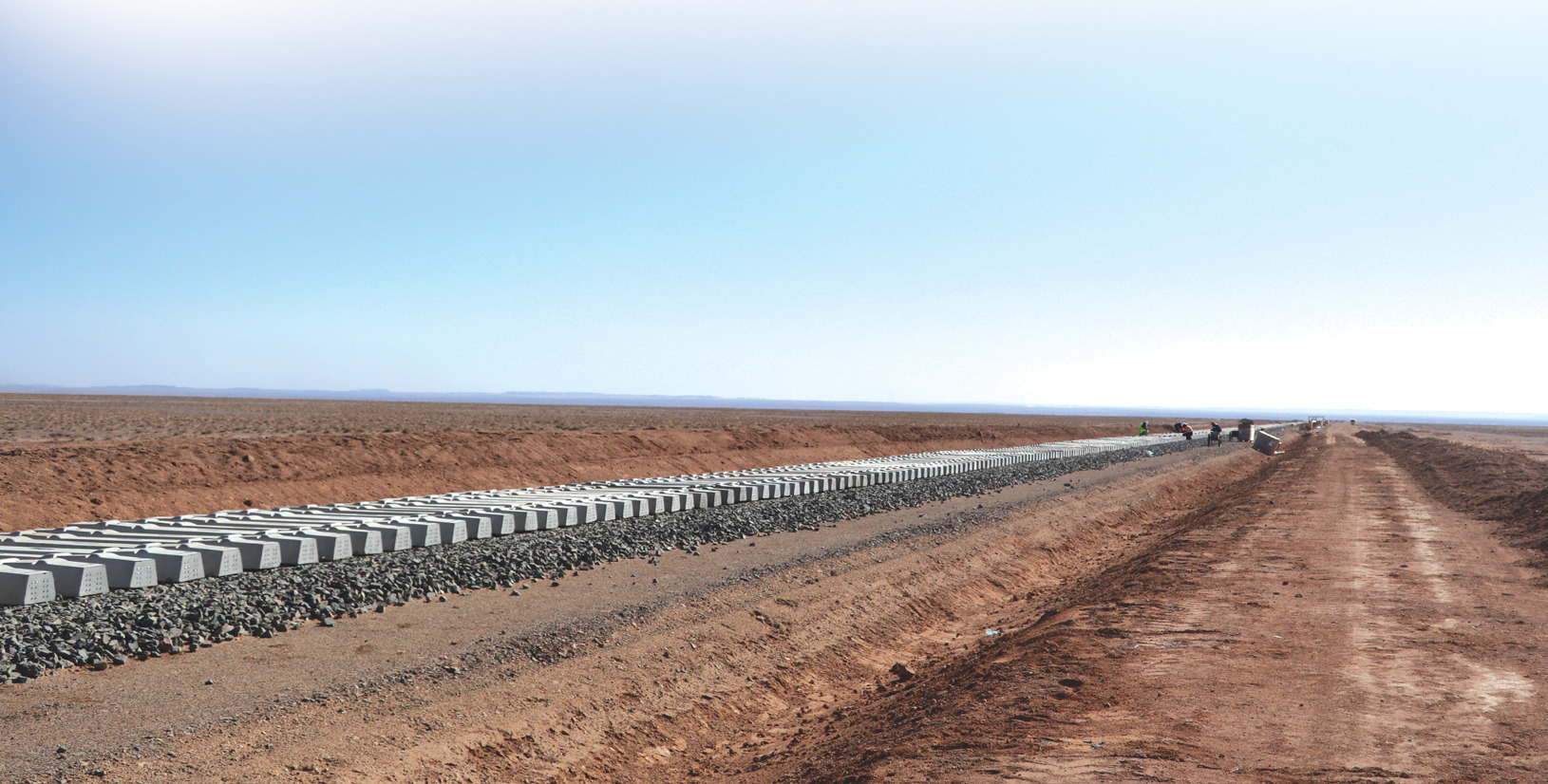
By А. Khaliun
On March 27, Parliament discussed and approved the draft Law on Ratification of the Agreement between the Government of Mongolia and the Government of the People’s Republic of China. This focuses on cooperation for the construction of the Gashuunsukhait-Gantsmod cross-border railway, boosting coal trade, and expanding the capacity of the Tavan Tolgoi coal mine.
A legal framework has now been established to begin constructing the cross-border railway, which holds the top rank in terms of social and economic significance among the 14 mega projects outlined in the government's action program.
This law was passed with broad support from Parliament as all members recognize its importance.
Prime Minister L. Oyun-Erdene highlighted, “Mongolia signed its first agreement with China to establish a railway connection in 1955, linking the Zamyn-Uud and Erlian border crossings. Seventy years later, the second agreement to build a railway link between our two countries has been approved.” He went on to add, “With the approval of this law and the start of construction, we have laid the groundwork for future negotiations to establish additional railway connections with our southern neighbor.”
Cross-border railway to be commissioned in 2027
The ratification of the Gashuunsukhait-Gantsmod border agreement establishes the legal framework for beginning construction. To initiate the project, a tender will be announced in accordance with Mongolia’s Law on the Procurement of Goods, Works, and Services with State and Local Funds. Assuming an average tendering period of one month, construction on the cross-border railway could commence by May 1, 2025. The project is expected to be completed within 22 months (or approximately 1.9 years), with the railway scheduled to be operational by April 2027.
“The construction of a bridge over the border is a complex engineering project, and currently, there is no company in our country with experience in undertaking work of this scale. Therefore, the construction of the cross-border railway will be carried out by a Chinese company specializing in railway bridge construction. The tender will be open to companies from China,” said Minister of Roads and Transport B. Delgersaikhan.
The technical design for the cross-border railway bridge structure was developed by the China Railway Design Corporation in September 2023 and has been approved under Mongolia's Law on Construction. This means that the technical design is now finalized and available.
According to the technical design, the narrow-gauge railway built on Mongolian territory will span 14.5 km and will become the property of Mongolia. The broad-gauge railway connecting Mongolia to China will extend to the raw material warehouse of the Chinese company China Energy. Additionally, construction of the loading and unloading terminal on the border will begin.
Since only one bridge structure will be built across the border between the two countries, it was deemed appropriate for a single company to carry out the construction. During the parliamentary session, the Minister of Roads and Transport explained that the decision to entrust the project to one company was made to ensure greater accountability. He expressed concerns that if separate companies from each country were involved, it could lead to misunderstandings.
Under the agreement, 247 million tons of coal are set to be exported over the next 16 years
According to the agreement, Mongolia will export 27 million tons of coal between 2025 and 2029. Starting in 2030, 20 million tons will be shipped annually. This agreement will span 16 years, during which a total of approximately 247 million tons of coal will be exported, as announced by Minister of Industry and Mineral Resources, Ts. Tuvaan.
The quality and composition of the coal to be mined are also clearly specified. Of the total coal to be exported, 55% will be coking coal, 35% will be a blend containing one-third coking coal, and 10% will be exported as thermal coal. In addition to these provisions, the protocol also notes that China Energy Group has expressed its readiness to purchase additional thermal coal, as Minister Ts. Tuvaan added.
By increasing transport capacity, Mongolia plans to boost its annual coal exports to 165 million tons by 2030. Of this total, 80 million tons are expected to be transported via road and railway through the Gashuunsukhait-Gantsmod border crossing.
To boost coal exports, Mongolia needs to increase its production. For instance, the current production capacity of Erdenes Tavan Tolgoi is 30 million tons per year, with the potential to double the mine's capacity, according to the sector's minister.
The agreement stipulates that, alongside the construction of the border railway, negotiations will begin to connect additional border crossings by rail. The third border crossing to be linked with the neighboring country is Shiveekhuren, which will increase its export capacity by 10 million tons. Following that, the Bichigt point will be connected, further expanding its export capacity by 10 million tons. The fifth priority is to connect the Khangi border point by rail.
However, coal prices have been fluctuating and declining over the past six months, as negotiations for a railway connection between the two governments intensified.
In previous years, the average price of a ton of coal was $120 and so, the government projected the coal price at $105 for the 2025 State Budget. However, by the end of March 2025, the average price had dropped to $80. The Prime Minister and sectorial ministers have expressed their hope that the situation will not worsen further.